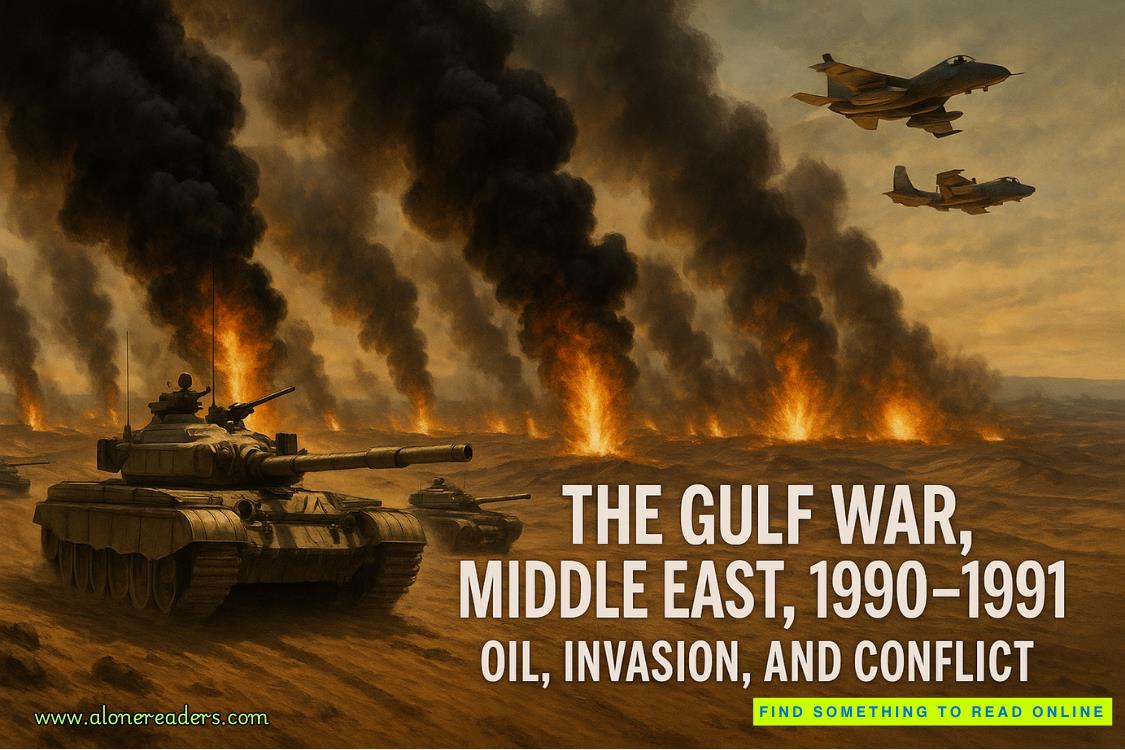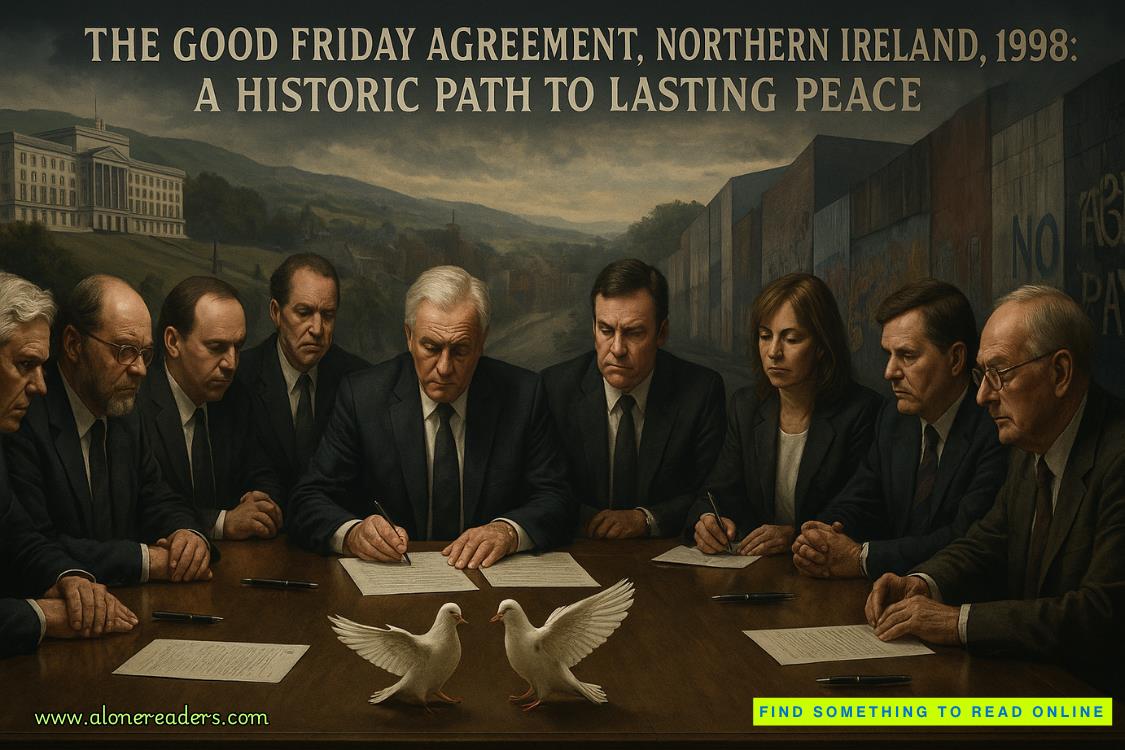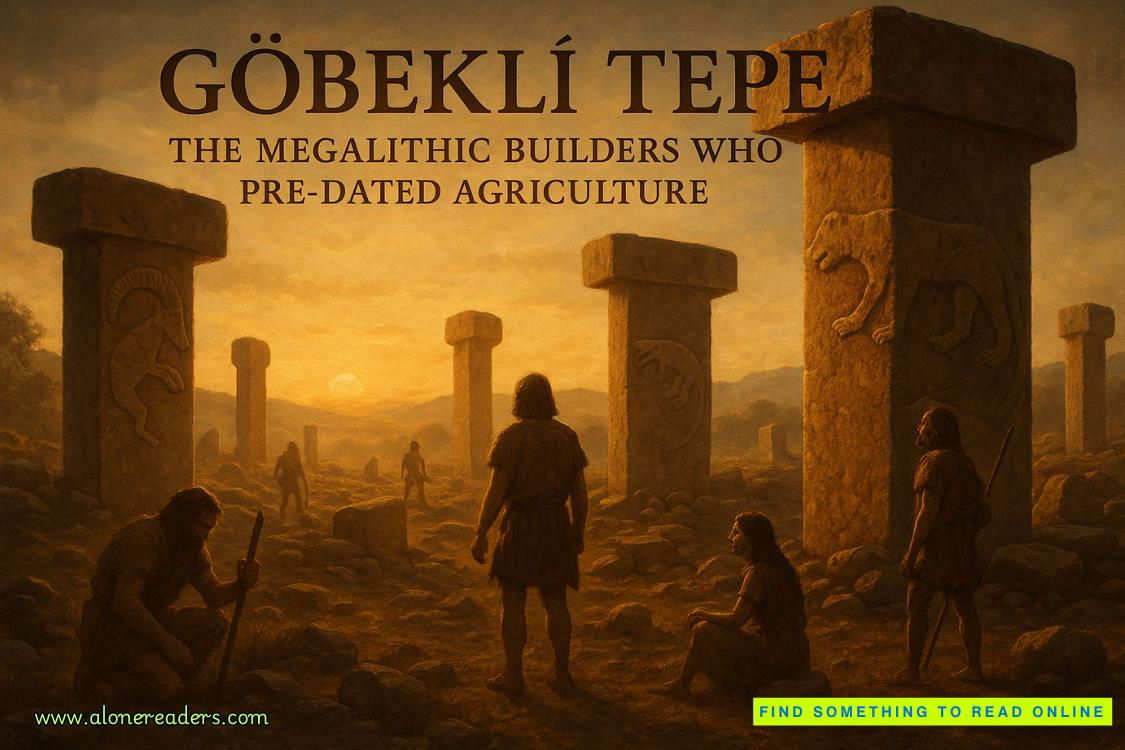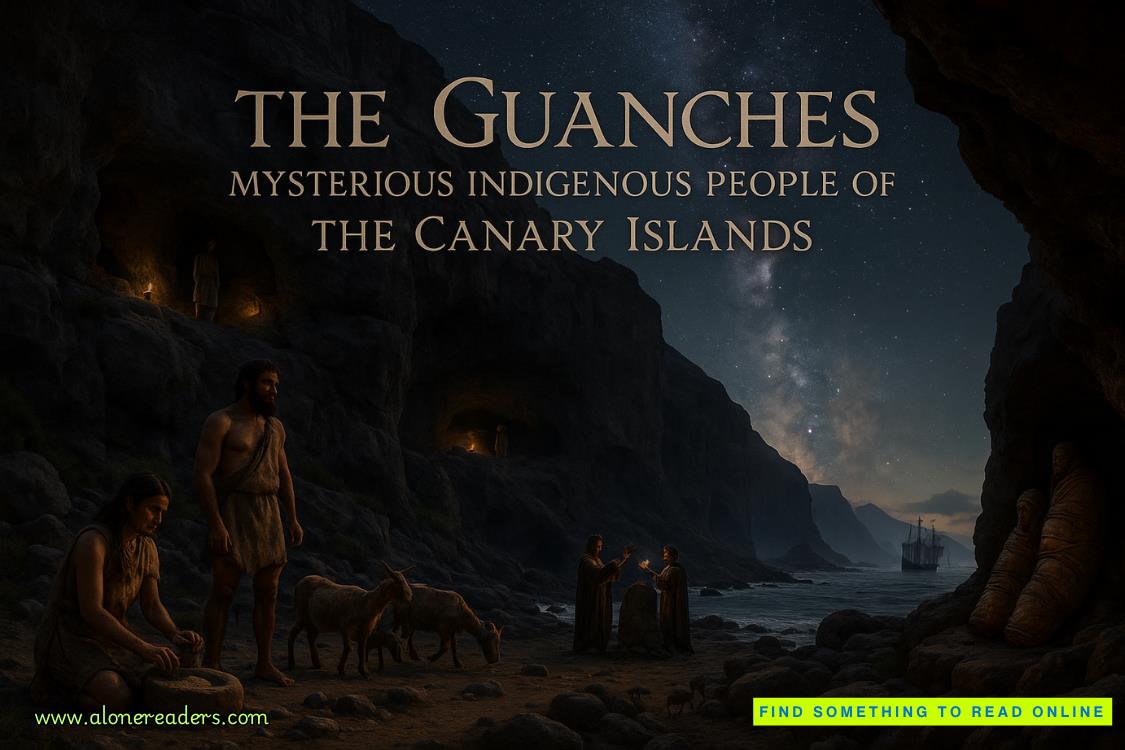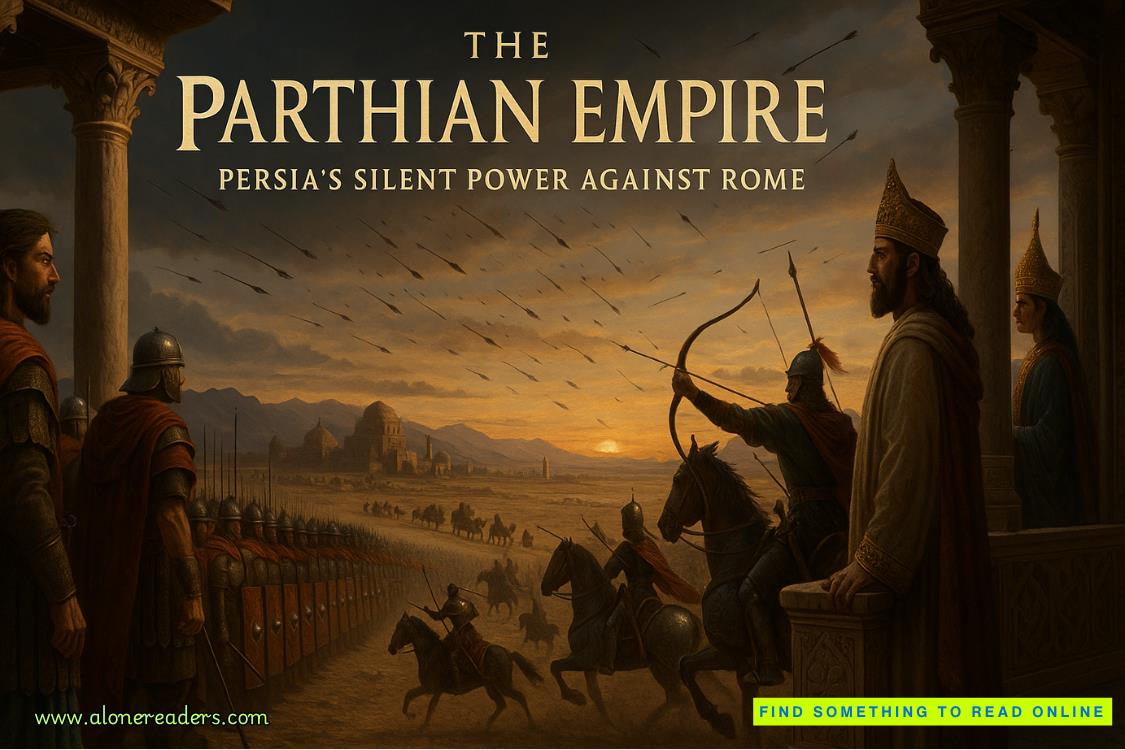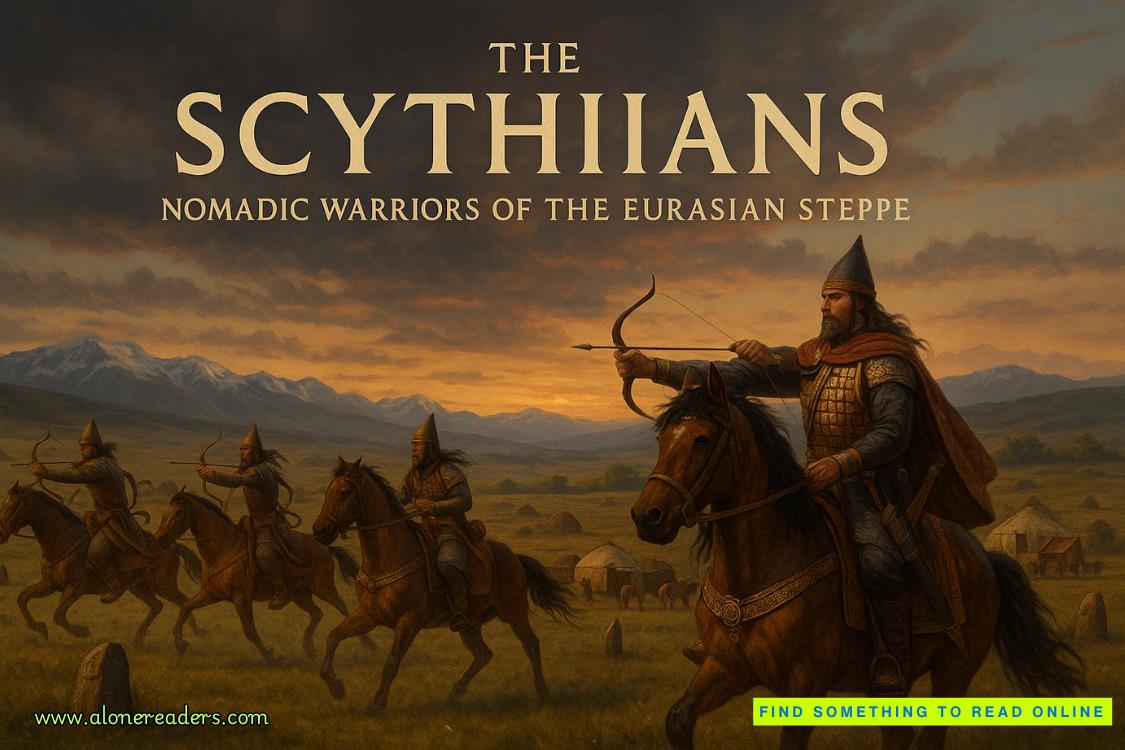Page 6 of The Dogs of War
As the taxi moved away, Roux stared after it angrily. He was muttering to himself as he strode toward the parking lot and his own automobile.
He switched on the engine, slipped into gear, and sat for a few moments staring through the windscreen. “One day I’ll kill that bastard,” he murmured to himself. But the thought hardly put him in a better mood.
two
Jack Mulrooney shifted his bulk on the canvas-and-frame cot beneath the mosquito netting and watched the slow lightening of the darkness above the trees to the east. A faint paling, enough to make out the trees towering over the clearing. He drew on his cigarette and cursed the primeval jungle which surrounded him, and, like all old Africa hands, asked himself once again why he ever returned to the pestiferous continent.
If he had really tried to analyze himself, he would have admitted he could not live anywhere else, certainly not in London or even Britain. He couldn’t take the cities, the rules and regulations, the taxes, the cold. Like all old hands, he alternately loved and hated Africa but conceded it had got into his blood over the past quarter century, along with the malaria, the whisky, and the million insect stings and bites.
He had come out from England in 1945 at the age of twenty-five, after five years as a fitter in the Royal Air Force, part of them at Takoradi, where he had assembled crated Spitfires for onward flight to East Africa and the Middle East the long way around. That had been his first sight of Africa, and on demobilization he had taken his discharge pay, bidden good-by to frozen, rationed London in December 1945, and taken ship for West Africa. Someone had told him there were fortunes to be made in Africa.
He had found no fortunes but after wandering the continent had got himself a small tin concession in the Benue Plateau, eighty miles from Jos in Nigeria. Prices had been good while the Malay emergency was on. He had worked alongside his Tiv laborers, and at the English club where the colonial ladies gossiped away the last days of the empire they said he had “gone native” and it was a damned bad show. The truth was, Mulrooney really preferred the African way of life. He liked the bush; he liked the Africans, who did not seem to mind that he swore and roared and cuffed them to get more work done. He also sat and took palm wine with them and observed the tribal taboos. He did not patronize them. His tin concession ran out in 1960, around the time of independence, and he went to work as a charge hand for a company running a larger and more efficient concession nearby. It was called Manson Consolidated, and when that concession also was exhausted, in 1962, he was signed on the staff.
At fifty he was still a big, powerful man, large-boned and strong as an ox. His hands were enormous, chipped and scarred by years in the mines. He ran one of them through his wild, crinkly gray hair and with the other stubbed out the cigarette in the damp red earth beneath the cot. It was lighter now; soon it would be dawn. He could hear his cook blowing on the beginnings of a fire on the other side of the clearing.
Mulrooney called himself a mining engineer, although he had no degree in mining or engineering. He had taken a course in both and added what no university could ever teach—twenty-five years of hard experience. He had burrowed for gold on the Rand and copper outside Ndola, drilled for precious water in Somaliland, grubbed for diamonds in Sierra Leone. He could tell an unsafe mine shaft by instinct, and the presence of an ore deposit by the smell. At least that was his claim, and after he had drunk his habitual twenty bottles of beer in the shantytown of an evening, no one was going to argue with him. In reality, he was one of the last of the old prospectors. He knew ManCon gave him the little jobs, the ones in the deep bush, the wild country that was miles from civilization and still had to be checked out, but he liked it that way. He preferred to work alone; it was his way of life.
The latest job had certainly fulfilled these conditions. For three months he had been prospecting in the foothills of the range called the Crystal Mountains in the hinterland of the republic of Zangaro, a tiny enclave on the coast of West Africa.
He had been told where to concentrate his survey, around the Crystal Mountain itself. The chain of large hills, curved hummocks rising to two or three thousand feet, ran in a line from one side of the republic to the other, parallel to the coast and forty miles from it. The range divided the coastal plain from the hinterland. There was only one gap in the chain, and through it ran the only access to the interior, a narrow dirt road, baked like concrete in summer, a quagmire in winter. Beyond the mountains, the natives were the Vindu, a tribe of almost Iron Age development, except that their implements were of wood. He had been in some wild places but vowed he had never seen anything as backward as the hinterland of Zangaro.
Set on the farther side of the range of hills was the single mountain that gave its name to the rest. It was not even the biggest of them. Forty years earlier a lone missionary, penetrating the hills into the interior, branched to the south after following the gap in the range and after twenty miles glimpsed a hill set aside from the rest. It had rained the previous night, a torrential downpour, one of the many that gave the area its annual rainfall of three hundred inches during five soaking months. As the priest looked, he saw that the mountain seemed to be glittering in the morning sun, and he called it the Crystal Mountain. He noted this in his diary. Two days later he was clubbed and eaten. The diary was found by a patrol of colonial soldiers a year later, being used as a juju by a local village. The soldiers did their duty and wiped out the village, then returned to the coast and handed the diary to the mission society. Thus the name the priest had given to the mountain lived on, even if nothing else he did for an ungrateful world was remembered. Later the same name was given to the entire range of hills.
What the man had seen in the morning light was not crystal but a myriad of streams caused by the water of the night’s rain cascading off the mountain. Rain was also cascading off all the other mountains, but the sight of it was hidden by the dense jungle vegetation that covered them all, like a chunky green blanket when seen from afar, which proved to be a steaming hell when penetrated. The one that glittered with a thousand rivulets did so because the vegetation was substantially thinner on the flanks of this hill. It never occurred to the missionary, or to any of the other dozen white men who had ever seen it, to wonder why.
After three months living in the steaming hell of the jungles that surrounded Crystal Mountain, Mulrooney knew why.
He had started by circling the entire mountain and had discovered that there was effectively a gap between the seaward flank and the rest of the chain. This set the Crystal Mountain eastward of the main chain, standing on its own. Because it was lower than the highest peaks to seaward, it was invisible from the other side. Nor was it particularly noticeable in any other way, except that it had more streams running off it per mile of hillside than ran off the other hills, to north and south.
Mulrooney counted them all, both on the Crystal Mountain and on its companions. There was no doubt of it. The water ran off the other mountains after rain, but a lot of water was soaked up in the soil. The other mountains had twenty feet of topsoil over the basic rock structure beneath, the Crystal Mountain hardly any. He had his native workers, locally recruited Vindu, bore a series of holes with the augur he had with him, and confirmed the difference in depth of the topsoil in twenty places. From these he would work out why.
Over millions of years the earth had been formed by the decomposition of the rock and by dust carried on the wind, and although each rainfall had eroded some of it down the slopes into the streams, and from the streams to the rivers and thence to the shallow, silted estuary, some earth had also remained, lodged in little crannies, left alone by the running water, which had bored its own holes in the soft rock. And these holes had become drains, so that part of the rainfall ran off the mountain, finding its own channels and wearing them deeper and deeper, and some had sunk into the mountain, both having the effect of leaving part of the topsoil intact. Thus the earth layer had built up and up, a little thicker each century or millennium
. The birds and the wind had brought seeds, which had found the niches of earth and flourished there, their roots contributing to the process of retaining the earth on the hill slopes. When Mulrooney saw the hills, there was enough rich earth to sustain mighty trees and tangled vines which covered the slopes and the summits of all the hills. All except one.
On this one the water could not burrow channels that became streams, nor could it sink into the rock face, especially on the steepest face, which was to the east, toward the hinterland. Here the earth had collected in pockets, and the pockets had produced clumps of bush, grass, and fern. From niche to niche the vegetation had reached out to itself, linking vines and tendrils in a thin screen across bare patches of rock regularly washed clean by the falling water of the rain season. It was these patches of glistening wet amid the green that the missionary had seen before he died. The reason for the change was simple: the separate hill was of a different rock from the main range, an ancient rock, hard as granite as compared to the soft, more recent rock of the main chain of hills.
Mulrooney had completed his circuit of the mountain and established this beyond a doubt. It took him a fortnight to do it and to establish that no less than seventy streams ran off the Crystal Mountain. Most of them joined up into three main streams that flowed away eastward out of the foothills into the deeper valley. He noticed something else. Along the banks of the streams that came off this mountain, the soil color and the vegetation were different. Some plants appeared unaffected; others were stunted or nonexistent, although they flourished on the other mountains and beside the other streams.
Mulrooney set about charting the seventy streams, drawing his map as he went. He also took samples of the sand and gravel along the beds of the streams, starting with the surface gravel, then working down to bedrock.
In each case he took two buckets full of gravel, poured them out onto a tarpaulin, and coned and quartered. This is a process of sample taking. He piled the gravel into a cone, then quartered it with a shovel blade, took the two opposite quarters of his choice, remixed them, and made another cone. Then he quartered that one, working down till he had a cross-section of the sample weighing two to three pounds. Then this went into a polyethylene-lined canvas bag after drying; the bag was sealed and carefully labeled. In a month he had fifteen hundred pounds of sand and gravel in six hundred bags from the beds of the seventy streams. Then he started on the mountain itself.
He already believed his sacks of gravel would prove to contain, under laboratory examination, quantities of alluvial tin, minute particles washed down from the mountain over tens of thousands of years, showing that there was cassiterite, or tin ore, buried in the Crystal Mountain.
He divided the mountain faces into sections, seeking to identify the birthplaces of the streams and the rock faces that fed them in the wet season. By the end of the week he knew there was no mother lode of tin inside the rock, but suspected what geologists called a disseminated deposit. The signs of mineralization were everywhere. Beneath the trailing tendrils of vegetation he found faces of rock shot through with stringers, half-inch-wide veins like the capillaries in a drinker’s nose, of milky-white quartz, lacing yard after yard of bare rock face.
Everything he saw about him said “tin.” He went right around the mountain again three times, and his observations confirmed the disseminated deposit, the ever-present stringers of white in the dark gray rock. With hammer and chisel he smashed holes deep in the rock, and the picture was still the same. Sometimes he thought he saw dark blurs in the quartz, confirming the presence of tin.
Then he began chipping in earnest, marking his progress as he went. He took samples of the pure white stringers of quartz, and to be on the safe side he also took samples of the country rock, the rock between the veins. Three months after he had entered the primeval forest east of the mountains, he was finished. He had another fifteen hundred pounds of rock to carry back to the coast with him. The whole ton and a half of rock and alluvial samples had been carried in portions every three days back from his working camp to the main camp, where he now lay waiting for dawn, and stacked in cones under tarpaulins.
After coffee and breakfast the bearers, whose terms he had negotiated the previous day, would come from the village and carry his trophies back to the track that called itself a road and linked the hinterland with the coast. There, in a roadside village, lay his two-ton truck, immobilized by the absence of the key and distributor rotor that lay in his knapsack. It should still work, if the natives had not hacked it to bits. He had paid the village chief enough to look after it. With his samples aboard the truck and twenty porters walking ahead to pull the lurching vehicle up the gradients and out of the ditches, he would be back in the capital in three days. After a cable to London, he would have to wait several days for the company’s chartered ship to come and take him off. He would have preferred to turn north at the coast highway and drive the extra hundred miles into the neighboring republic, where there was a good airport, and freight his samples home. But the agreement between ManCon and the Zangaran government specified that he would take them back to the capital.
Jack Mulrooney heaved himself out of his cot, swung aside the netting, and roared at his cook, “Hey, Dingaling, where’s my bloody coffee?”
The Vindu cook, who did not understand a word except “coffee,” grinned from beside the fire and waved happily. Mulrooney strode across the clearing toward his canvas wash bucket and began scratching as the mosquitoes descended on his sweating torso.
“Bloody Africa,” he muttered as he doused his face. But he was content that morning. He was convinced he had found both alluvial tin and tin-bearing rock. The only question was how much tin per rock ton. With tin standing at about $3300 per ton, it would be up to the analysts and mining economists to work out if the quantity of tin per ton of rock merited establishing a mining camp with its complex machinery and teams of workers, not to mention improved access to the coast by a narrow-gauge railway that would have to be built from scratch. And it was certainly a godforsaken and inaccessible place. As usual, everything would be worked out, taken up or thrown away, on the basis of pounds, shillings, and pence. That was the way of the world. He slapped another mosquito off his upper arm and pulled on his T-shirt.
